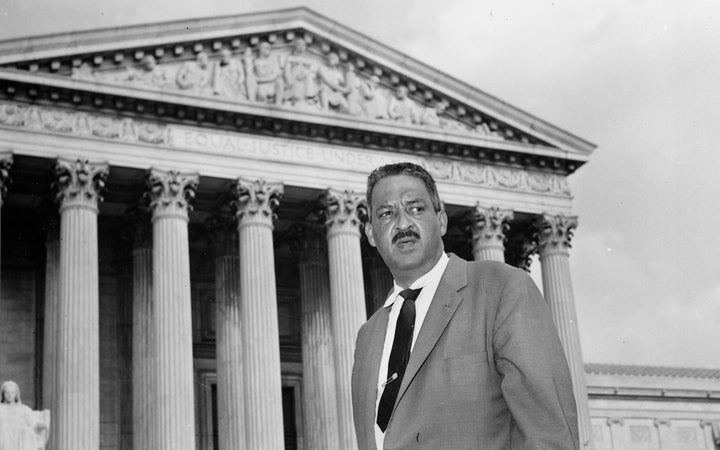
Last century, white parents from Arkansas to Boston vigorously opposed the integration of local schools. Today, most white Americans still do not support interventions that would put more of their children in classrooms with black students, a new poll reveals.
A HuffPost/YouGov poll asked Americans if they think "the government should or should not try to make sure public schools include a balance of children from different races." Nearly half opposed government intervention to diversify schools. Most said kids should go to their neighborhood schools even if they're not racially diverse -- which they're usually not.
Responses varied drastically along racial lines.
Some 61 percent of black Americans and 55 percent of Hispanic Americans said they think the government should take steps to increase school diversity. Only 28 percent of white Americans said the same.
In the decades after the U.S. Supreme Court declared the official segregation of schools unconstitutional in 1954's Brown v. Board of Education, many school districts took strides to ensure a more equitable racial balance in the classroom. Following passage of the Civil Rights Act of 1964, districts risked losing federal funds if they did not desegregate. However, starting in the 1990s, a series of Supreme Court decisions helped dismantle policies that had spurred greater diversity.
In 2016, schools remain significantly segregated by race and class. The typical black student attends a school that is less than 10 percent white, according to research from the UCLA Civil Rights Project. And these facilities are far from equal: Black students are more likely to attend schools with less qualified teachers, high poverty rates and lower state and local per-pupil funding.
Americans do not necessarily see or understand this racial isolation. In the HuffPost/YouGov poll, only 40 percent said they think public schools are somewhat or very segregated by race, compared to 44 percent who disagreed.
Black Americans were almost twice as likely as whites to say schools are very or somewhat segregated: 62 percent vs. 34 percent. Republicans were less likely than Democrats to describe schools as segregated.
A plurality of Americans did recognize that attending a racially diverse school is "better for students." Yet a solid majority said it is more important "to have students go to local community schools even if it means most students are of the same race." Only 18 percent said it is more important "to have students go to racially diverse schools even if many of the students don't live nearby."
In lieu of efforts to desegregate schools by race, a growing number of districts have been trying to desegregate along socioeconomic lines, said Richard Kahlenberg, a senior fellow at The Century Foundation. He noted more than 80 school districts nationwide use socioeconomic status as a factor when determining school assignments.
But another HuffPost/YouGov poll found low levels of public support for government intervention on this basis.
There is evidence that socioeconomic desegregation, like racial desegregation, can help narrow achievement gaps between groups of students. A study of North Carolina's Wake County Public School System found that when socioeconomic status was a factor in assigning students, schools retained their high levels of racial diversity, and achievement gaps in math between black and white students decreased.
In recent years, though, Wake County has moved away from those efforts as its population has grown.
"In order to keep the diversity, many people had to change schools," explained Monique McMillian, an associate professor at Morgan State University, who studied the system. "I think for many families, they were upset at having to constantly change schools and not be able to buy a home in a particular neighborhood and know where their child was going to go to school."
The HuffPost/YouGov polls each consisted of 1,000 completed interviews conducted Dec. 16-18 and Dec. 23-27 among U.S. adults, using a sample selected from YouGov's opt-in online panel to match the demographics and other characteristics of the adult U.S. population.
The Huffington Post has teamed up with YouGov to conduct daily opinion polls. You can learn more about this project and take part in YouGov's nationally representative opinion polling. Data from all HuffPost/YouGov polls can be found here. More details on the polls' methodology are available here.
Most surveys report a margin of error that represents some, but not all, potential survey errors. YouGov's reports include a model-based margin of error, which rests on a specific set of statistical assumptions about the selected sample, rather than the standard methodology for random probability sampling. If these assumptions are wrong, the model-based margin of error may also be inaccurate. Click here for a more detailed explanation of the model-based margin of error.
